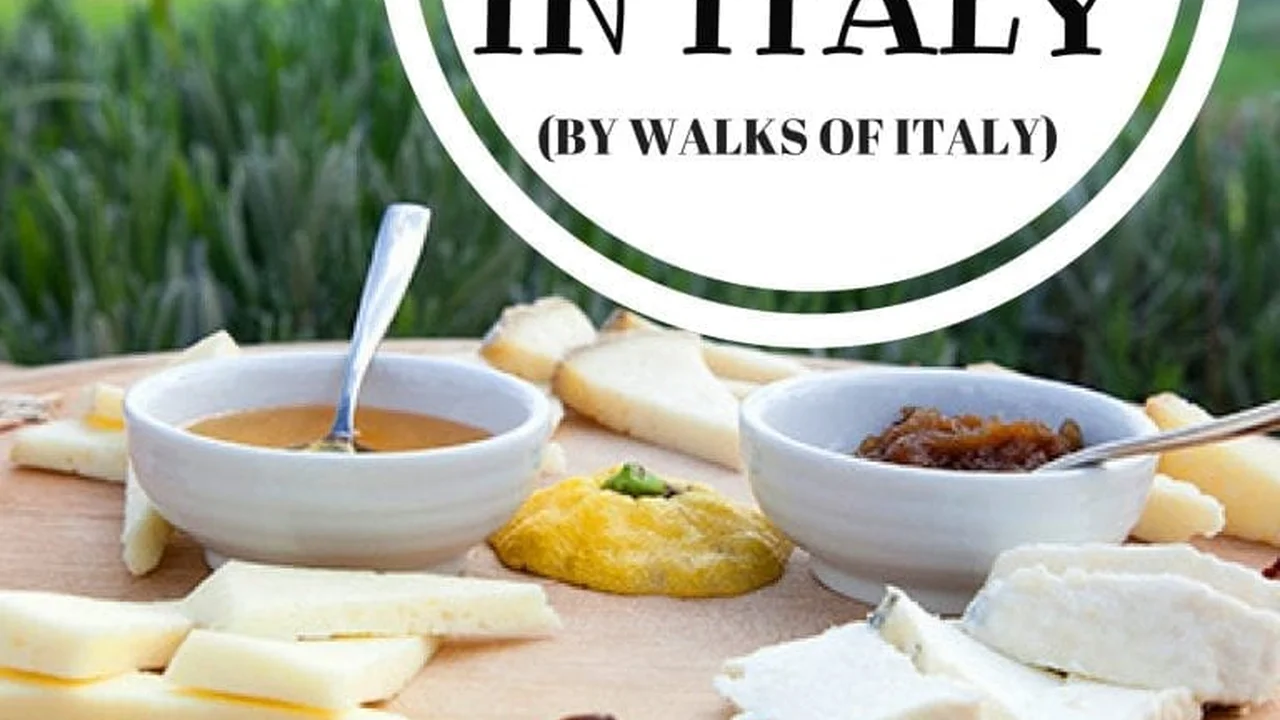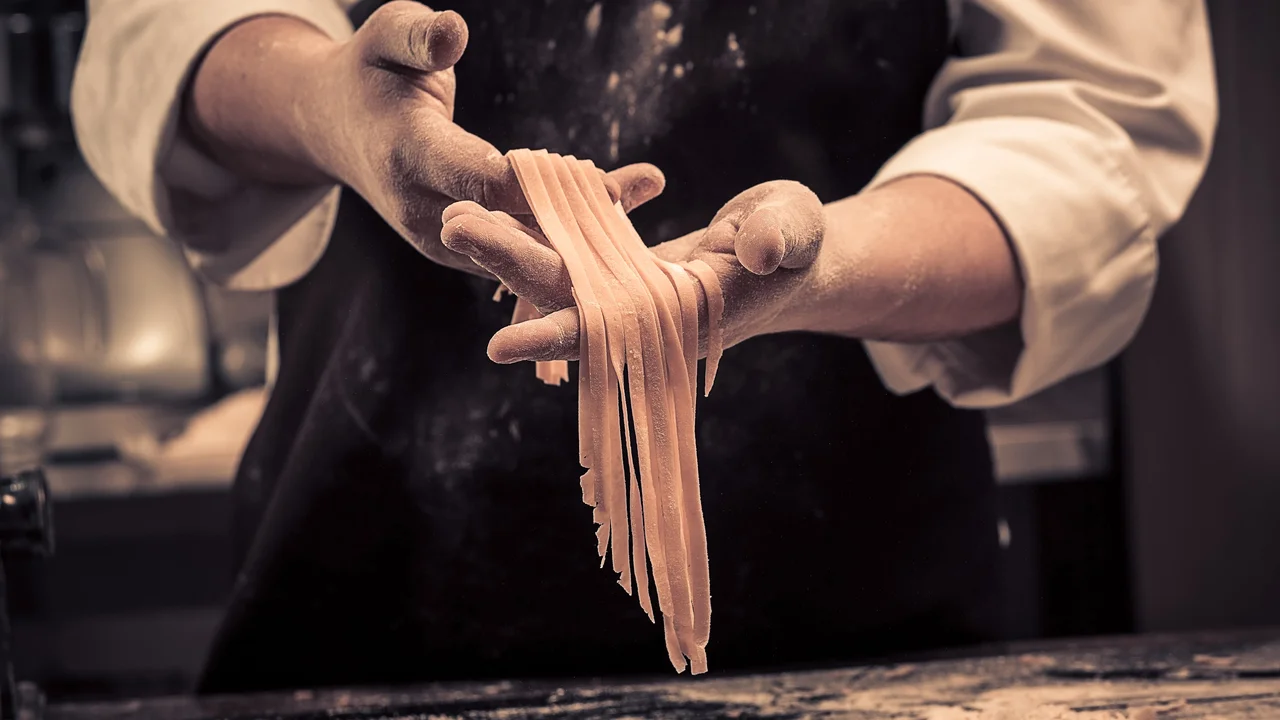Italian Cheese Guide: Exploring Italy's Best Cheeses
Explore the diverse world of Italian cheeses. Learn about different types of cheese, production methods, and regional specialties. Experience the rich flavors and textures of Italian cheese.

An Introduction to Italian Cheese Types and Regional Specialties
So, you're heading to Italy, or maybe you're just dreaming about it (like I often do!), and you're thinking about the food, right? Pizza, pasta, gelato – all the classics. But let's not forget about the cheese! Italian cheese is a whole world unto itself, a delicious landscape shaped by regional traditions, unique production methods, and of course, amazing flavor. We're going to dive deep into the world of Italian formaggio, exploring everything from the familiar mozzarella to the more obscure regional specialties. Get ready to drool!
Mozzarella The Fresh and Versatile Italian Cheese
Let's start with a classic, the cheese that sits atop countless pizzas: Mozzarella. But hold on, there's more to mozzarella than just the stuff you find at your local supermarket. Real-deal mozzarella di bufala, made from the milk of water buffalo, is a completely different experience. It's creamy, slightly tangy, and incredibly fresh.
Where it's from: Campania region, particularly around Naples.
What to look for: "Mozzarella di Bufala Campana DOP" – the DOP label guarantees authenticity.
How to enjoy it: Caprese salad (with tomatoes and basil), on pizza, or simply enjoyed with a drizzle of olive oil.
Parmigiano Reggiano The King of Italian Hard Cheeses
Next up, the king of Italian hard cheeses, Parmigiano Reggiano. This isn't just any Parmesan; it's the real deal, aged for a minimum of 12 months (often much longer!). The aging process gives it that complex, nutty, and slightly salty flavor that we all know and love. But again, the real stuff is a world apart from the pre-grated stuff in a green can.
Where it's from: Emilia-Romagna region, specifically the provinces of Parma, Reggio Emilia, Modena, and parts of Bologna and Mantua.
What to look for: The DOP stamp and the dotted rind that says "Parmigiano Reggiano."
How to enjoy it: Grated over pasta, shaved into salads, or enjoyed on its own with balsamic vinegar.
Pecorino Romano A Sharp and Salty Sheep's Milk Cheese
Now, let's talk about Pecorino Romano. This is a hard, salty cheese made from sheep's milk. It has a sharper flavor than Parmigiano Reggiano and is often used in Roman pasta dishes.
Where it's from: Lazio, Sardinia, and Tuscany.
What to look for: The DOP stamp. Taste it – it should be noticeably salty!
How to enjoy it: Grated over pasta (especially cacio e pepe and carbonara), or enjoyed with honey or figs.
Gorgonzola Italy's Famous Blue Cheese
For those who love a pungent cheese, Gorgonzola is a must-try. This blue cheese is made from cow's milk and has a creamy, slightly spicy flavor. There are two main types: Gorgonzola Dolce (sweet) and Gorgonzola Piccante (spicy).
Where it's from: Lombardy and Piedmont regions.
What to look for: The DOP stamp and the type (Dolce or Piccante).
How to enjoy it: On pizza, in pasta sauces, or with walnuts and pears.
Ricotta A Light and Creamy Cheese Perfect for Desserts
Ricotta is a fresh, creamy cheese made from whey, the liquid leftover from making other cheeses. It's light and slightly sweet, making it perfect for desserts like cannoli and ricotta cheesecake. It's also great in savory dishes like lasagna.
Where it's from: All over Italy.
What to look for: Freshness! It should smell clean and milky.
How to enjoy it: In desserts, lasagna, or simply spread on toast with honey.
Provolone From Mild to Sharp A Versatile Italian Cheese
Provolone is a semi-hard cheese that comes in two main varieties: Provolone Dolce (mild) and Provolone Piccante (sharp). The dolce variety is aged for a shorter period and has a mild, buttery flavor. The piccante variety is aged longer and has a sharper, more pronounced flavor.
Where it's from: Originally from Southern Italy, but now produced throughout the country.
What to look for: The type (Dolce or Piccante) and the DOP stamp (for certain varieties).
How to enjoy it: In sandwiches, grilled, or melted over dishes.
Fontina A Nutty and Creamy Cheese From the Aosta Valley
Fontina is a semi-hard cheese with a nutty and slightly sweet flavor. It's made from cow's milk and is aged for at least three months. It's often used in fondue and other melted cheese dishes.
Where it's from: Aosta Valley region.
What to look for: The DOP stamp.
How to enjoy it: In fondue, melted over dishes, or in sandwiches.
Mascarpone The Key Ingredient for Tiramisu and Other Desserts
Mascarpone is a soft, creamy cheese made from cream. It has a rich, buttery flavor and is often used in desserts like tiramisu. It's also great in savory dishes like pasta sauces.
Where it's from: Lombardy region.
What to look for: Freshness! It should smell clean and creamy.
How to enjoy it: In tiramisu, other desserts, or in pasta sauces.
Taleggio A Stinky but Delicious Italian Cheese
Don't let the smell scare you away! Taleggio is a washed-rind cheese with a pungent aroma, but a surprisingly mild and creamy flavor. It's made from cow's milk and is aged for a short period.
Where it's from: Lombardy region.
What to look for: The DOP stamp and the slightly sticky rind.
How to enjoy it: On pizza, in risotto, or with fruit and nuts.
Burrata A Creamy Delight Made with Mozzarella and Cream
Burrata is basically mozzarella's cooler, more decadent cousin. It’s a fresh Italian cheese made from mozzarella and cream. The outer shell is solid mozzarella, while the inside is filled with stracciatella and cream, giving it a rich and incredibly creamy texture.
Where it's from: Apulia region.
What to look for: It should feel soft and yielding to the touch. The inside should be very creamy.
How to enjoy it: Drizzled with olive oil and sprinkled with salt, with roasted vegetables, or on pizza after it's cooked.
Specific Italian Cheese Product Recommendations and Comparisons
Okay, now that we've covered some of the major players, let's get down to some specific product recommendations. Keep in mind that availability will vary depending on where you live, but these are some brands to look out for:
Mozzarella di Bufala Campana DOP
Product Recommendation: Caseificio Barlotti Mozzarella di Bufala Campana DOP. This is widely considered one of the best.
Usage Scenario: The star of a Caprese salad. Slice thick, add ripe tomatoes, fresh basil, and a good drizzle of extra virgin olive oil.
Comparison: Many brands exist, but look for the DOP stamp to ensure authenticity. Cheaper versions often use cow's milk instead of buffalo milk and lack the same creamy texture and subtle tang.
Price: Expect to pay around $10-15 per pound, depending on the retailer.
Parmigiano Reggiano
Product Recommendation: Consorzio del Parmigiano Reggiano – any wheel that bears this mark is guaranteed authentic. Look for different aging periods (12 months, 24 months, 36 months) for varying flavor intensities.
Usage Scenario: Grated over pasta, especially dishes with tomato sauce or pesto. Also delicious shaved into salads.
Comparison: Avoid pre-grated Parmesan if possible. It lacks the flavor and texture of freshly grated. "Parmesan" that isn't labeled "Parmigiano Reggiano" is often a lower-quality imitation.
Price: Around $20-30 per pound, depending on the aging and retailer.
Pecorino Romano DOP
Product Recommendation: Locatelli Pecorino Romano DOP. This is a widely available and consistently good brand.
Usage Scenario: Essential for Roman pasta dishes like cacio e pepe and carbonara. The saltiness of the cheese adds a crucial element to these dishes.
Comparison: Some brands can be overly salty or have a slightly artificial flavor. Locatelli is a reliable choice.
Price: Around $15-20 per pound.
Gorgonzola DOP
Product Recommendation: Igor Gorgonzola Dolce DOP. This is a widely available and well-regarded brand for the sweet variety.
Usage Scenario: Spread on crusty bread with honey and walnuts, or crumbled into salads.
Comparison: Pay attention to whether you are buying "Dolce" (sweet) or "Piccante" (spicy). The piccante variety has a much stronger flavor.
Price: Around $10-15 per pound.
Burrata
Product Recommendation: Di Stefano Burrata. This is a popular brand known for its high-quality ingredients and creamy texture.
Usage Scenario: Serve at room temperature with a drizzle of olive oil, balsamic glaze, and a sprinkle of sea salt. Pair with ripe tomatoes and basil for a simple yet elegant appetizer.
Comparison: The quality of burrata can vary significantly. Look for a cheese that is fresh, creamy, and has a delicate flavor. Avoid burrata that is too firm or has a sour taste.
Price: Around $8-12 per ball.
Tips for Storing and Serving Italian Cheeses
To keep your Italian cheeses at their best, follow these tips:
- Store hard cheeses (like Parmigiano Reggiano and Pecorino Romano) wrapped tightly in plastic wrap in the refrigerator.
- Store fresh cheeses (like mozzarella, ricotta, and burrata) in their original packaging or in a container with some of their liquid. Consume within a few days of purchase.
- Bring cheeses to room temperature before serving to allow their flavors to fully develop.
- Serve cheeses with complementary accompaniments like fruit, nuts, honey, and crackers.
Enjoying the Diversity of Italian Cheese
So there you have it – a whirlwind tour of the amazing world of Italian cheese. From the familiar to the exotic, there's a cheese out there for everyone. So next time you're planning a trip to Italy (or just a trip to the grocery store!), be sure to explore the delicious landscape of Italian formaggio. Buon appetito!
:max_bytes(150000):strip_icc()/277019-baked-pork-chops-with-cream-of-mushroom-soup-DDMFS-beauty-4x3-BG-7505-5762b731cf30447d9cbbbbbf387beafa.jpg)






